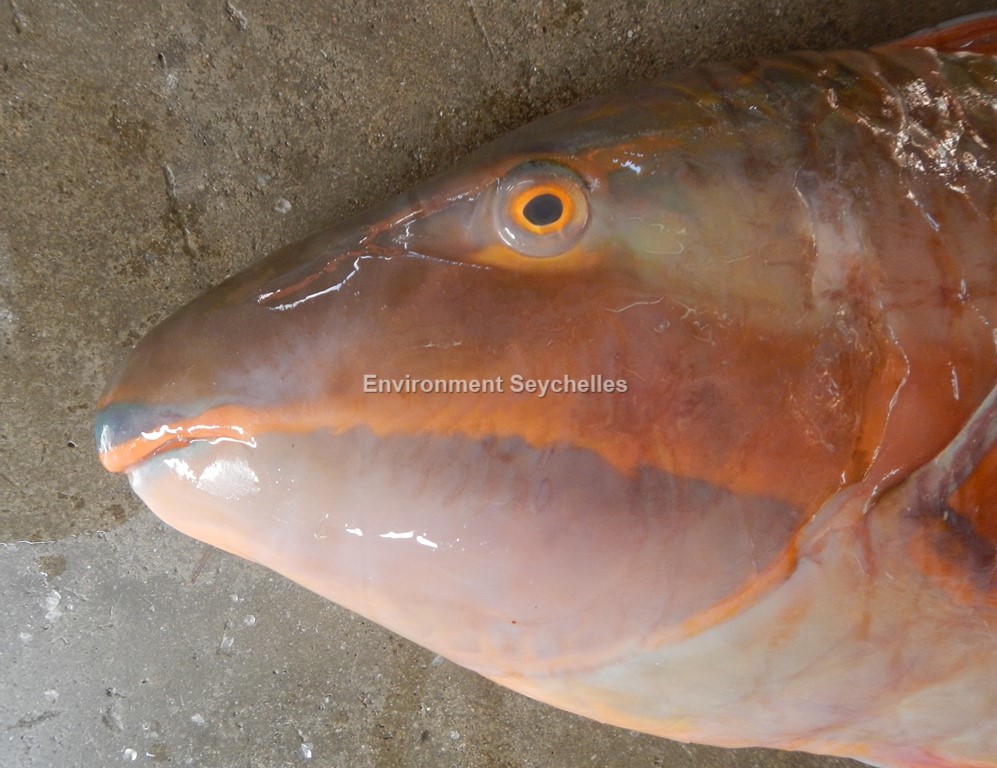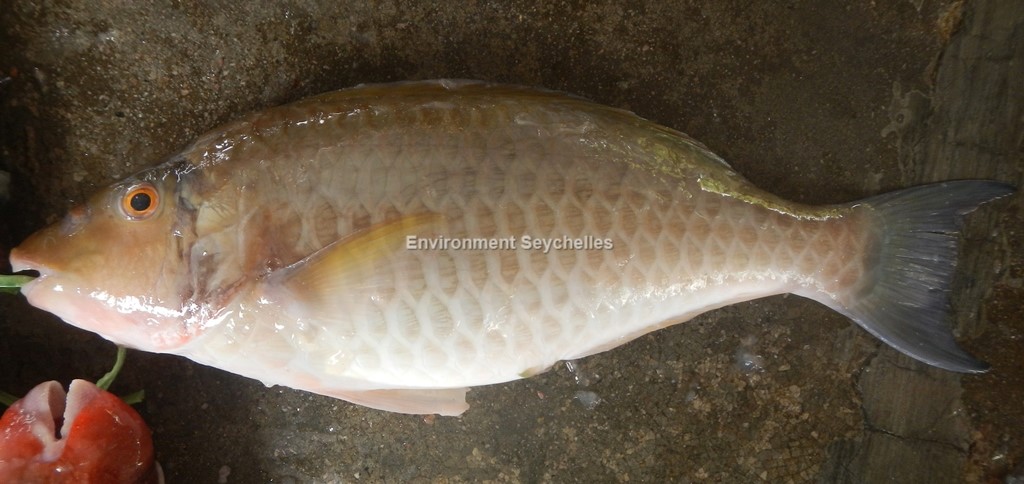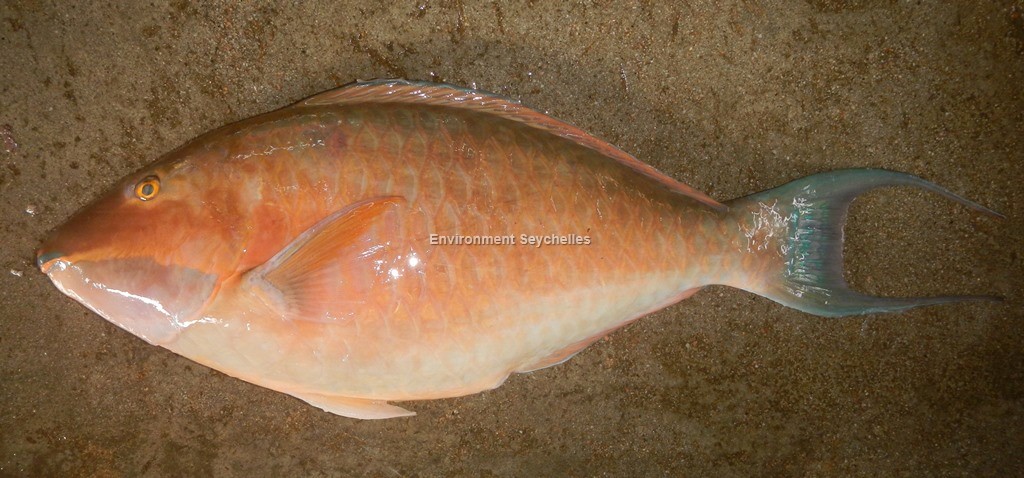Description:
Dorsal spines 9, dorsal rays 10. Anal spines 3, anal rays 9.
Medium-sized parrotfish. Head pointed with long face. Cheek scales small, especially anteriorly, forming a nearly isolated sub-triangular patch, the
scales in 3 or 4 rows. Dental plates narrow and covered/nearly covered by lips. Initial phase fish with no canine teeth posteriorly on dental plates;
terminal phase fish with one or two canines on upper dental plate near edge, none on lower. Caudal fin progressively more emarginate with age, caudal
lobes of Terminal phase very long.
Initial phase: pale lilac body, edges of scale paler, shading to whitish ventrally. Caudal fin a darker purple. Dorsal and anal fins pale yellowish with
light blue or blue-green borders. Upper edge of eye blue, iris yellowish with inner rim yellow.
Terminal Phase: body orangish to grey-orange dorsally to orange on the flanks (scales edged in pale orange) and paler ventrally. Edges of lips orange
with a submarginal band of blue, the orange continuing as distinctive bridle across cheek and operculum. Pronounced sickle finned caudal fin with blue
and orange bars.
Size:
Lm unknown. Range unknown. Max Length: 75 cm TL (but rarely exceeds 55 cm TL and common length 35 cm TL).
Habitat and Ecology:
Inhabits coastal regions associated with coral reefs and reef flats (depth 1-25 m). Generally found in protected waters, often over sand flats near reefs.
Forms haremic groups of one terminal phase and numerous initial phase fish. Feeds on benthic algae. Oviparous, distinct pairing during breeding.
Fishery Status:
This species is not protected or subject to fishery regulations. It is caught in the fish trap fishery, but is an uncommon component of the catch.
Notes:
References:
Choat, J.H. et al. (2012). Hipposcarus harid. The IUCN Red List 2012: http://dx.doi.org/10.2305/IUCN.UK.2012.RLTS.T190733A17779418.en. (19/03/19).
Froese, R. & D. Pauly. (Eds.) (2022). FishBase. https://www.fishbase.se/summary/7906 (15/08/22).
Lieske, E. & Myers, R. (2002). Coral Reef Fishes. Indo-Pacific and Caribbean. Revised edition. Princeton University Press. ISBN 0-691-08995-7
Nevill, J. (2013). A Species Identification Guide for Commonly Caught Fish in the Seychelles Near-Shore Artisanal Fishery. GOS/UNDP/GEF.
Randall, J.E. & Bruce, R.W. (1983). The Parrotfishes of the Subfamily Scarinae of the Western Indian Ocean with Descriptions of Three New species.
Ichthyological Bulletin of the J.L.B. Smith Institute of Ichthyology. Number 47 March1983 ISSN: 0073-4381
Smith, M. & Heemstra, P. (Eds.) (1999). Smiths’ Sea Fishes Edition 6. Springer-Verlag Berlin Heidelberg 10.1007/978-3-642-82858-4
Citation:
Nevill, J.E.G. (2019). Hipposcarus harid, Candelamoa parrotfish. Seychelles Seatizens. www.seatizens.sc. https://seatizens.sc/species/hipposcarus-harid-forsskal-1775/ (edited 15/08/22).




There are no comments